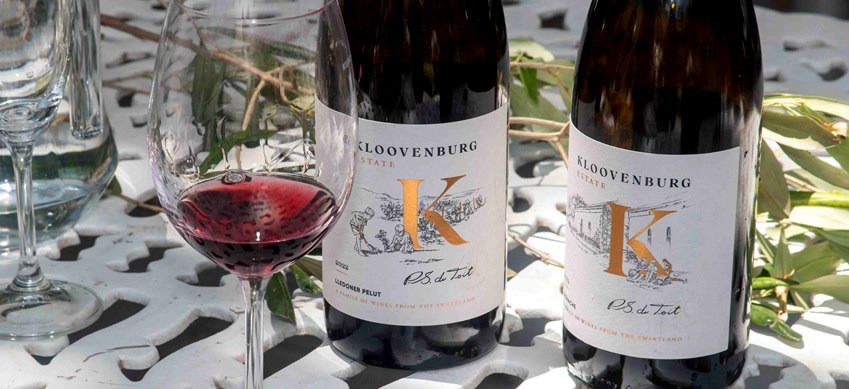Quite suddenly, viticulturist Rosa Kruger wails and the telephone dies. I’ve called about a new clone at Kloovenburg she had a central hand in bringing to South Africa. Seconds later, she rings back.
“I’m sorry,” she says. Apparently, she’s looking after someone’s dog and it got in amongst some of her own animals. “I’ve just got too many animals. Now, where were we?”
It’s about Lledoner Pelut, a clone of Grenache. In 2018, Kloovenburg became the first to plant clean material and last month, the second vintage of the single cultivar wine was being finalised.
‘Grenache has been good to us’
“I came across it during a visit to Europe and the South of France some 15 years ago. At the time, there were few Grenache clones in South Africa even though the grape had been good to us.”
The climate here suited Grenache well, but Rosa says the reason this particular clone piqued her attention was itsability to ripen at a lower balling and especially itsnaturally high acid. “And if there’s one thing a winegrower in a warmer climate needs, it’s that acid. In that sense, it is like [the Greek white wine grape] Assyrtiko."
Lledoner Pelut goes by many names. Jancis Robinson points out in her Oxford Companion to Wine that it’s a synonym of Garnacha Peluda, a "downy-leafed variant of Garnacha Tinta".
It has similarities to Grenache Noir and has smaller berries with thicker skins. “The grapes reach phenolic ripeness at lower sugar levels than Garnacha Tinta so the wines are generally lower in alcohol (no more than 13,5%)…”
It occurs in France and Spain.
A 10-year journey to get into South Africa
Through vine improvement service Vititec, samples were acquired. The long and expensive regulatory process, including 10 years of quarantine, followed. “Here, credit goes to Vititech’s former CEO Nico Spreeth, who was instrumental in this effort; and, to Kloovenburg’sPiet du Toit. Piet had the courage to take the step and make the long-term investment," says Rosa.
Some might say that stepping out runs in the Du Toit genes. Piet’s parents moved to Kloovenburg in 1957 – one, a commerce graduate, the other, a teacher, and the family declares that neither knew much about farming vineyards.
Nonetheless, Kloovenburg emerged as a landmark wine producer of the Swartland, and a pioneering olive grower that continues to look to the future. The half-hectare planting of Lledoner Pelut was part of a wider programme to bring the farm’s vineyards closer to the terroir and climate predictions embarked on a decade ago.
Since then, Lledoner Pelut has found its way to other wineries too, including the Mullineux’s of Riebeeksrivier.

Kloovenburg’s Lledoner Pelut is well-received
What its future holds remains to be seen. The single variety wine produced by Kloovenburg is essentially part of the research, but the reception has been good, according to Kloovenburg winemaker Duncan Stuart.
"It's an early pick; about a week earlier than Grenache," he says. “It’s really great.”
It’s early days to consider expansion, but Duncan reckons the vines are looking good, despite still being very young.
Rosa says the view is supported by Master of Wine Madeleine Stenwreth, consultant to Kloovenburg.
Winemag’s Christian Eedes reviewed the 2022 vintage in April remarking that “one the whole, [the wine is] quite likeable and Kloovenburg deserve praise for adding variety to the national vineyard”. Some 40% of that vintage was whole-bunch fermented with natural fermentation done in open tanks. Light punch-downs were given twice a day. The wine was left on the skins for a week and then pressed to neutral oak barrels. It spent 10 months in barrel before bottling.
What’s this wine for?
As for Lledoner Pelut’s additional uses, Rosa says the French vineyards are often old and mixed. “The fruit generally ends up as a blend of Grenache.”
It is also often blended with Cabernet Sauvignon or Tempranillo.
"For now, Lledoner Pelut is definitely promising,” Rosay says. “I think it can make a significant contribution in the light of warmer forecast temperatures.”
And that’s something about long-term sustainability that’s on the minds of many winegrowers including leading lights of the Swartland.
Just before we hang up, she apologises again for the sudden interruption at the start of our conversation. “It gets busy around here!”
The Swartland Wine and Olive Route is a member organisation comprising the biggest representation of wine and olive producers of the Swartland region.